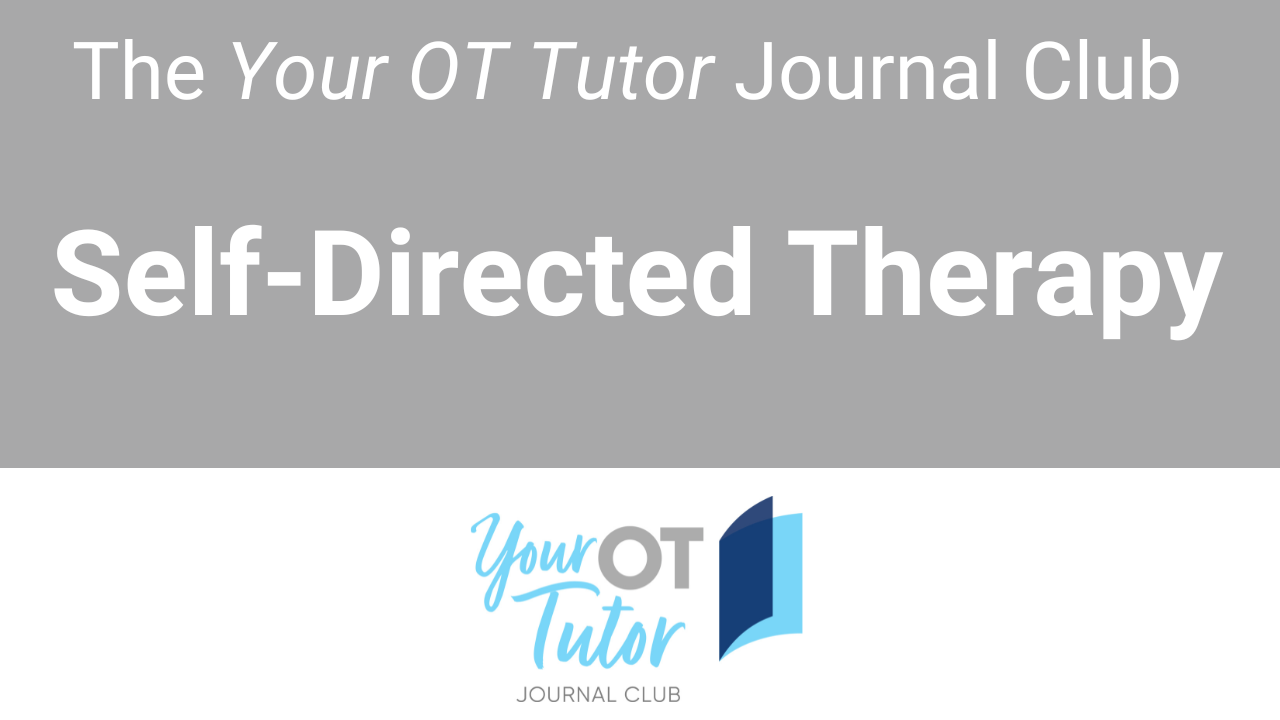
CPD for OTs - Self-directed Therapy
The Your OT Tutor Journal Club - The Journal Club you've been waiting for!

The details you need to know...
1. What article did we discuss? We reviewed and discussed a qualitative article describing the barriers and facilitators to implementing a self-directed therapy program within an inpatient rehabilitation setting in Australia. The Capability, Opportunity and Motivation Model of Behaviour (COM-B) was used to explore the perspectives of both patients (primarily older adults undertaking rehab for orthopaedic conditions or deconditioning) and clinicians (OT/PT/AHA). The article was published in 2023 and is part of a larger feasibility study of the therapy program.
2. What ‘Research Fundamentals’ tip was covered in this session? We covered an overview of qualitative data analysis, including the key steps in the process and strategies used to ensure credibility and trustworthiness of the findings.
3. What were the key points from the article critique? The CASP Qualitative Checklist was used. The research aim was clearly stated and overall a qualitative research design was appropriate, however, the use of free-text survey responses rather than interview or other means limited the depth of findings. A directed content analysis approach was also used, with findings presented using the COM-B framework. Overall the quality was sound, however OTs should consider transferability to their own specific caseload.
4. What were some of the key take home messages from the discussion? It was emphasised the clients need to have a clear understanding of their program, with videos or online platforms suggested as a way to provide this education in an efficient and engaging way rather than only workbooks. OTs should consider whether the client is motivated to change and use family/carers to further encourage clients to participate. Having a clear understanding of the outcomes that can be achieved, and using means to measure and track these outcomes, can assist with clinicians and clients having belief in the program.
5. How are OTs going to use what they learnt in this session? OTs were planning to use the COM-B model to analyse factors when setting up and monitoring self-directed therapy programs. There were plans to explore how technology could be used to enhance engagement, while also measuring outcomes and checking practice logs more regularly.
SOUND INTERESTING? SIGN-UP TODAY!
You'll get unlimited access to the content so you can revisit it whenever you need to.
If you are an OT student, my mission is to turn you into proud #OTNerds that love evidence-based practice and learning, so you can access this content for FREE! Click on the button below and send evidence of your student status and you'll be given access ASAP!
If you are an OT (or other interested health professional - all welcome), click on the button below to make your purchase for $25. You'll receive immediate access to all the resources via the Your OT Tutor Learning Management System!
Turns out this session isn't for you, but you're still interested in being added to the Your OT Tutor mailing list? Add your details by clicking on the button below to stay up to date with the latest Your OT Tutor resources and courses.
Get This Amazing Product Below:
Step 1: Contact
Step 2: Shipping Address
Shipping:
Step 3: Payment Information
Want to see what else is available through Your OT Tutor?
Copyright © 2024 - Clare Batkin - Your OT Tutor